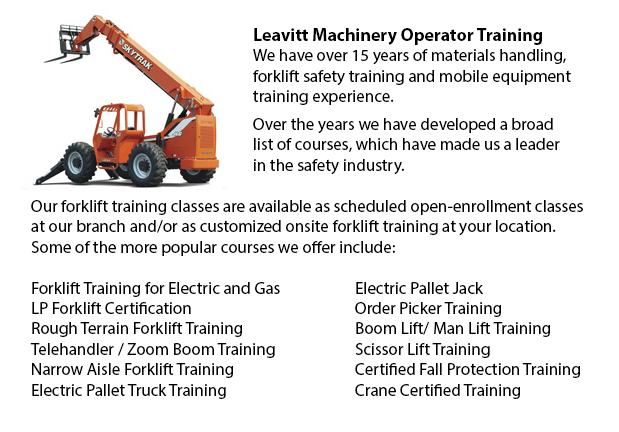
Telehandler License Vaughan - The telescopic handler or telehandler is a frequently used equipment in industrial and agricultural applications. This particular machine is the same in appearance to a forklift and also functions in a similar way, although telehandlers are much more like a crane than lift truck. It has a telescopic boom which could lengthen forward and upward from the motor vehicle. The boom has the capability to fit one of several accessories like a lift table, muck grab, pallet forks or a bucket.
Pallet tines are the most popular accessory meant for the telehandler. This particular equipment is commonly utilized for transporting loads to and from sites that a standard lift truck would find unreachable. Telehandlers are specially helpful for placing loads on rooftops for instance, or for removing palletized cargo from with a trailer. Many of the tasks which a telehandler could carry out will otherwise require a crane and this piece of equipment could be pricey, not practical and not always time efficient.
Because the boom extends or raises while bearing a load, it also acts as a lever. Despite the counterweights in the rear, this causes the equipment to become ever more unstable; therefore, the advantage of the telehandler is truly its greatest limitation. As the working radius increases, the lifting capacity lessens. The working radius is defined as the distance between the center of the load and the front of the wheels.
The telehandler with a 5000 lb capacity for example, with a retractable boom could safely lift as little as 400 lb at a fully extended boom at a low boom angle. Equivalent machinery with a lift capacity of 5000 lbs and a retractable boom which can support as much as 10,000 lb with the boom raises to approximately 70 degrees. The operator has a load chart in order to help determine whether a particular lifting task can be done in a safe and efficient manner. This particular chart considers the height, the boom angle and the weight.
So as to monitor the telehandler, they come equipped together with a computer which utilizes sensors. These sensors work to warn the operator, with some being able to cut controls to certain inputs if the limits of the motor vehicle are exceeded. Some telehandler kinds are likewise equipped with front outriggers which are called mobile cranes. These significantly extend the lifting capability of the equipment while it is stationary.
-
Forklift License Vaughan
Forklift License Vaughan - Getting a forklift certification or forklift license in North America would require the trainee to do hands-on training in addition to classroom instruction. The provincial, federal and state regulatory bodies are responsib... More -
Forklift Ticket Vaughan
Forklift Ticket Vaughan - Forklifts and the pallet jack is meant for just about the same reason. They work to raise and move supplies and goods from one place to another. This however is where the comparison stops though. With the pallet jack, the be... More -
Aerial Lift Certification Vaughan
Aerial Lift Certification Vaughan - Aerial Lift Certification is for individuals who need an in-depth understanding of aerial lift safety. Operators and inspectors, supervisors, maintenance workers and construction craftsmen should perform a certific... More -
Manlift Certification Vaughan
Manlift Certification Vaughan - The Manlifts and Elevated Platforms course provides training on the rules, regulations and proper application of safe operating measures and work practices included in everyday activities for those who work making use... More -
Heavy Equipment Training Vaughan
Heavy Equipment Training Vaughan - The two most common kinds of heavy equipment training are categorized into the categories of machines; equipment that is fashioned with rubber tires or those with tracks. The tracked vehicle are heavy duty machines... More -
Boom Lift Ticket Vaughan
Boom Lift Ticket Vaughan - Boom lifts are equipment that has a platform that may be lowered or raised to different heights, thus making this piece of equipment an important necessity in a wide variety of professions. Offered in many different particu... More -
Scissor Lift Training Vaughan
Scissor Lift Training Vaughan - Scissor lifts have to be operated competently to be able to protect the safety of the machinery and the safety of others within the workplace. Operators who are skilled are trained to drive the particular kind of sciss... More -
Forklift Training Course Vaughan
Forklift Training Course Vaughan - CSA and OSHA establish criteria for forklift safety training which meets existing regulations and standards. Anybody planning to operate a forklift is needed to successfully finish safety training before making use... More

Forklift Training Vaughan
TOLL FREE: 1-888-254-6157
Vaughan, Ontario
forklifttrainingvaughan.com
Email Us
About Us


